1. Introduction:
In the vast tapestry of Greek mythology, few figures stand out with as much versatility and intrigue as Hermes. Often seen darting between the worlds of gods and mortals, Hermes is a symbol of transition, adaptation, and communication. As the son of Zeus, king of the gods, and the Pleiad Maia, his celestial heritage alone marks him for greatness. However, it’s his myriad roles — from serving as the divine messenger and guide of souls to the protector of travelers and thieves — that truly underscore his significance. These multifaceted roles not only position Hermes as a crucial link between realms and beings but also provide a window into the values and concerns of ancient Greek society. Exploring the essence of Hermes allows us to uncover the intricate layers of mythology, culture, and symbolism embedded within his tales.
| Origin | Greek Mythology |
|---|---|
| Classification | God |
| Family Members | Zeus (Father), Maia (Mother), Pan (Son – in some accounts) |
| Region | Greece |
| Associated with | Communication, Commerce, Trickery, Travel, Messenger of the Gods |
2. The Birth and Early Life of Hermes:
Nestled within the serenity of Mount Cyllene in Arcadia, the tale of Hermes’ birth unfolds, a story that mirrors the uniqueness of his character. Born to Zeus, the omnipotent ruler of the Olympian gods, and Maia, the eldest of the Pleiades and daughter of Atlas, Hermes inherited a mix of divine majesty and earth-bound resilience. Maia’s gentle nature and reclusiveness, combined with Zeus’s power and authority, undoubtedly influenced the duality of Hermes’ character.
But it wasn’t just his lineage that marked Hermes as exceptional from his first breath. On the very day of his birth, a testament to his inherent mischief and intelligence emerged. Displaying an uncanny mix of cunning and charm, the infant Hermes sneakily stole Apollo’s sacred cattle. This act wasn’t mere child’s play. It was a strategic maneuver that led to the creation of the first lyre from a tortoise shell, which he later used to barter with Apollo, forging a bond between the two deities.
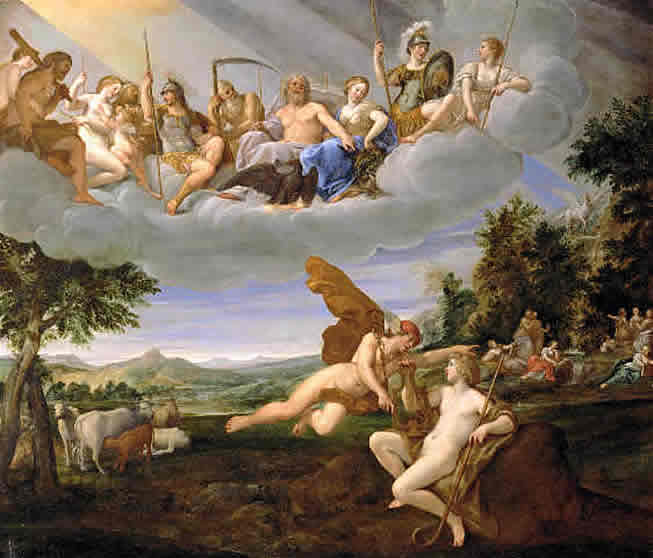
This episode, often recounted with a mix of amusement and awe, is emblematic of Hermes’ nature. Here was a god who, even in his infancy, showed signs of the cleverness, adaptability, and guile that would come to define his varied roles in the pantheon.
3. Hermes: The Messenger of the Gods:
In the intricate web of Greek mythology, where deities often held roles rife with power and drama, Hermes carved a unique niche for himself as the divine bridge between realms. As the Messenger of the Gods, he bore the significant responsibility of relaying messages, not only among the gods but also between divine beings and mortals. This pivotal position granted Hermes a sort of omnipresence in Greek myths, appearing at key moments to offer guidance, deliver divine decrees, or herald significant events.
Yet, it’s not merely his role as a messenger that sets Hermes apart, but also the iconic symbols associated with him, each encapsulating facets of his identity. The winged sandals, or “talaria,” which granted him unmatched swiftness, reflect his free spirit and ability to transcend boundaries. This ability to move swiftly through realms, connecting heaven, earth, and the underworld, made Hermes a beacon of hope, a liaison in times of need.
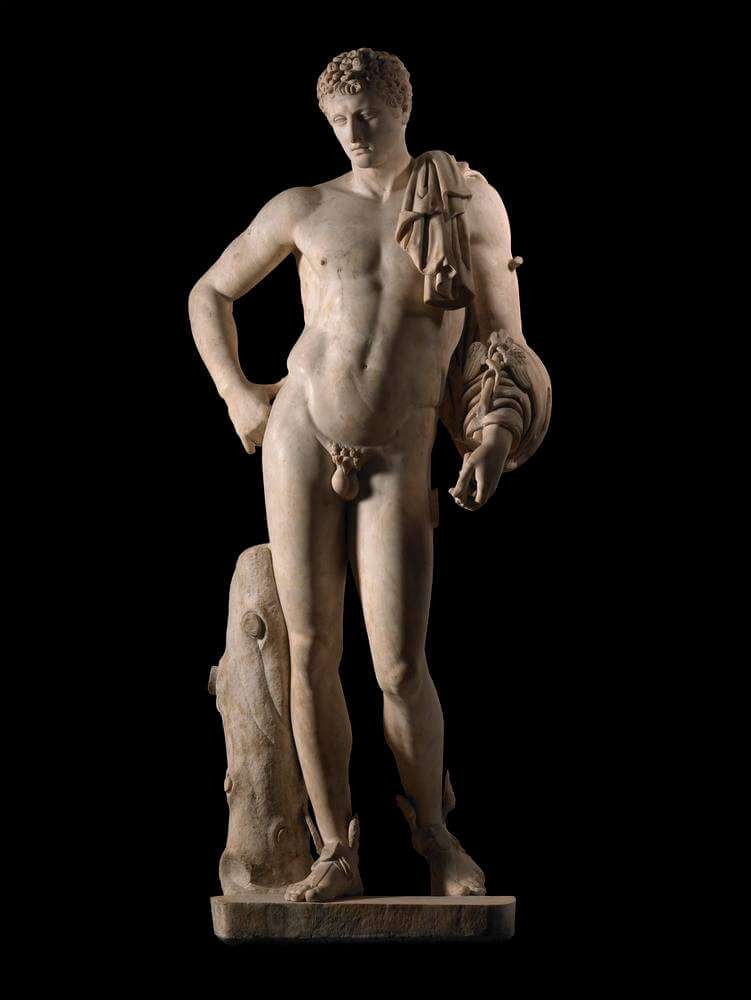
The caduceus, a staff entwined with two serpents and topped with wings, further emphasizes his role as a mediator. While today it is often associated with medicine, in ancient times it was a symbol of trade, negotiation, and even an emblem of peace – apt associations for a god known for his cunning and diplomacy.
Lastly, the petasos, a winged hat, not only accentuated his swift nature but also acted as a protective gear in his travels and a mark of his distinct stature among the gods.
All these symbols, coupled with his essential duties, paint a portrait of Hermes as more than just a messenger. They define him as an eternal link, ensuring harmony, connection, and balance in the ever-turbulent world of Greek myths.
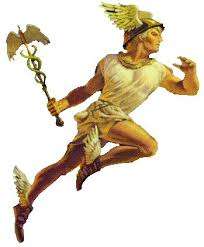
4. Roles and Realms of Influence:
Amid the vast landscape of Greek mythology, Hermes stands out not just for the breadth of his influence but for its depth across various spheres of life. Beyond his well-known role as a messenger, his dominion extended over a fascinatingly diverse range of realms, showcasing a deity with multifaceted importance.
To thieves, Hermes was both a guardian and a guide. His cunning, evident from his earliest escapades, resonated with their crafty endeavors. Yet, his protection wasn’t limited to those operating in shadows. Travelers, whether merchants venturing on long trade routes or wanderers exploring unknown lands, invoked his name for safety. This duality—overseeing both thievery and travel—highlights a nuanced god who champions adaptability and resourcefulness.
Similarly, Hermes’ patronage of trade signifies more than mere commerce. It encompasses the essence of exchange, negotiation, and the creation of bonds—both material and social. The bustling agora or marketplace, where ideas and goods flowed freely, can be seen as a reflection of his dynamic energy. Meanwhile, as the protector of shepherds, he was a symbol of pastoral simplicity and the intimate connection between humans and nature.
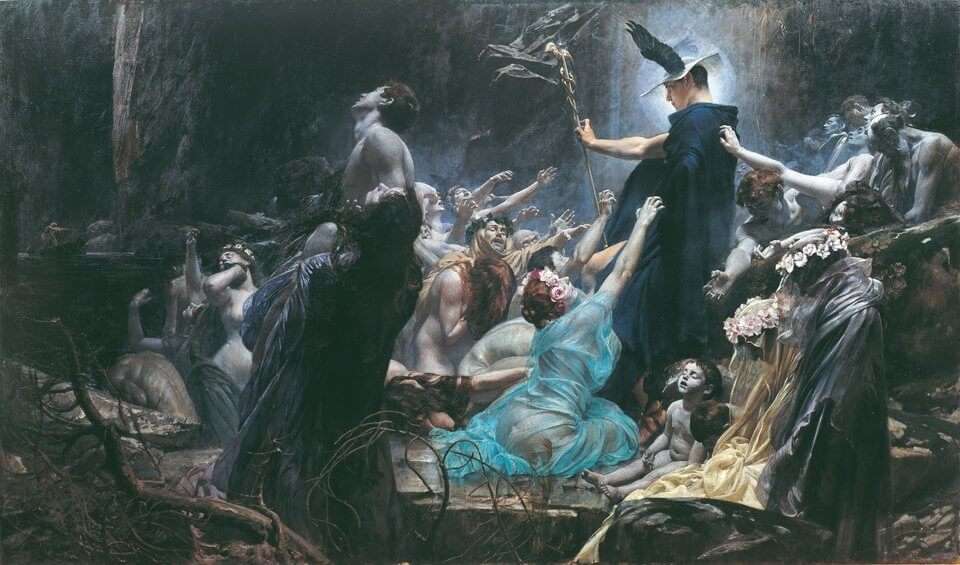
A significant, albeit more somber, aspect of Hermes’ role lies in his association with boundaries and transitions. Known as the “Psychopomp,” or soul-guide, Hermes had the sacred duty of escorting souls to the Underworld. This delicate task positioned him as a beacon of comfort during the ultimate transition—from life to death. It underscores his vital role in ensuring the natural order, bridging the realms of the living and the departed.
This vast array of roles—sometimes contrasting, sometimes complementing—positions Hermes as a god deeply woven into the fabric of daily life and cosmic order. His influence spanned not just geographies or activities, but the very thresholds that define existence.
5.Most Celebrated Tales Involving Hermes:
The enduring appeal of Hermes lies not just in his vast roles and realms but also in the captivating tales that chronicle his adventures. These stories, brimming with wit, wisdom, and wonder, shed light on the character and cleverness of this multifaceted deity.
The Tale of Hermes and Argus:
Among the most enthralling of Hermes’ stories is his encounter with Argus, the hundred-eyed giant. Tasked by Hera to guard the transformed Io, a lover of Zeus, Argus was no ordinary sentinel. With his numerous eyes, he was ever-vigilant, making escape seem impossible. However, Hermes, employing a blend of music and guile, lulled all of Argus’s eyes into sleep and subsequently rescued Io. This tale is emblematic of Hermes’ resourcefulness, showing that wit can overcome even the most daunting challenges.
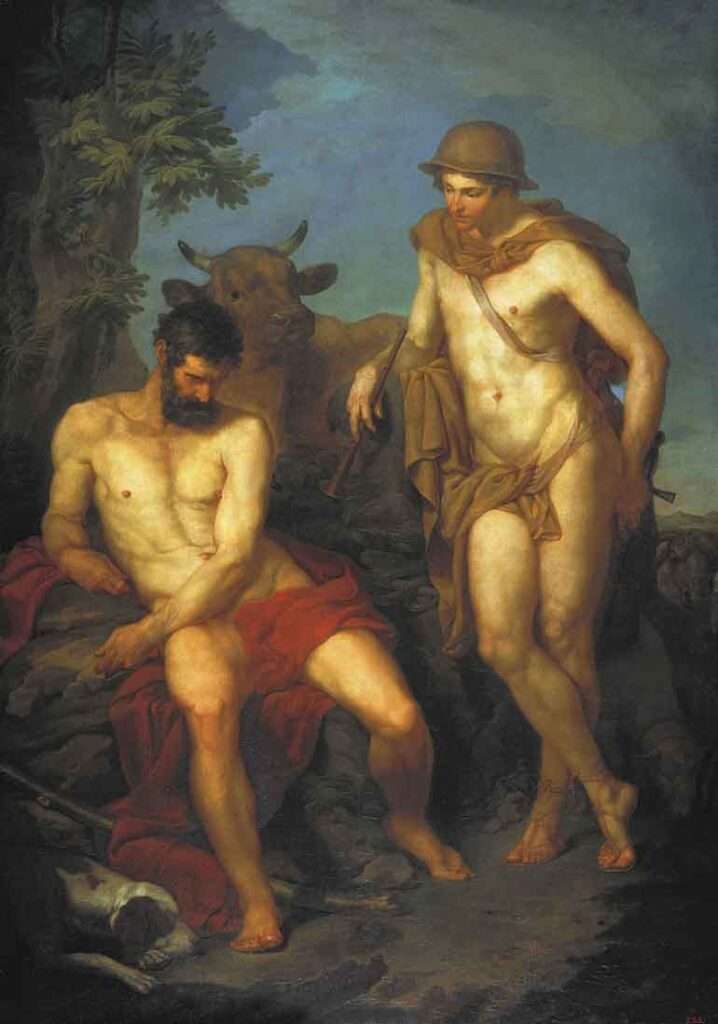
The Creation of the First Lyre:
Hermes’ inventiveness is brilliantly displayed in the tale of the first lyre. As a mere infant, he fashioned this musical instrument from a tortoise shell. But it wasn’t just about the creation; it was about reconciliation. When Apollo discovered that his cattle had been stolen by Hermes, it was this very lyre, offered as a peace gesture, that mended their relationship. This story paints a vivid picture of Hermes as both a creator and a diplomat, highlighting his propensity for harmonizing conflicts.
Assisting in the Escapes of Zeus’s Lovers:
Zeus, with his many romantic entanglements, often relied on Hermes to assist in the protection and escape of his lovers. Whether it was saving Io from the wrath of Hera or aiding in other intricate escapes, Hermes showcased his unwavering loyalty and sharp wit. These tales underscore his role as a protector, someone who navigates complexities with dexterity and discretion.
6. Hermes in Art and Literature:
The allure of Hermes transcends the annals of mythology, finding its echo through the corridors of time in various forms of art and literature. His captivating essence, a blend of wisdom and wit, has inspired countless artists and writers, resulting in a rich tapestry of depictions that span millennia.
Ancient Art:
The earliest visual renderings of Hermes can be traced back to ancient Greek pottery, where he was often depicted as a youthful, bearded man, donning his iconic winged sandals and carrying the caduceus. These images often captured moments from his celebrated tales, immortalizing his adventures for posterity. Frescoes, sculptures, and coins from the classical era also spotlight Hermes, emphasizing his significance in the Hellenistic world.
Renaissance Reverence:
The Renaissance, with its revival of classical themes, saw a renewed interest in Greek mythology. Artists like Botticelli and Praxiteles turned to Hermes, rendering him with a mix of idealized beauty and divine poise. In these artworks, Hermes often symbolized the bridging of the mortal and divine, echoing the Renaissance spirit of human potential and enlightenment.
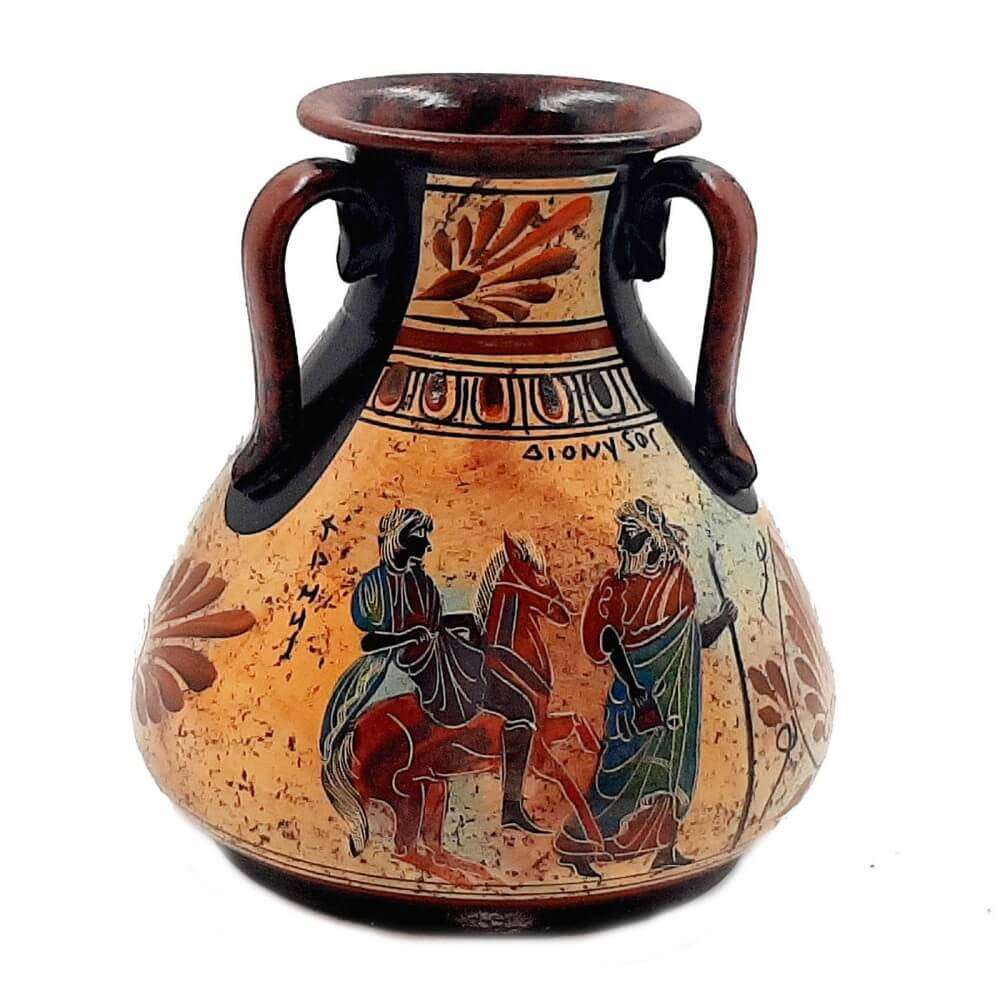
Modern Media and Literature:
As times evolved, so did the portrayals of Hermes. Modern literature, films, and even graphic novels have revisited his tales, each offering a unique spin. From being a suave, strategic deity in Rick Riordan’s “Percy Jackson” series to his nuanced representation in various movies, Hermes continues to capture the imagination of audiences. Contemporary artists and writers, while taking creative liberties, often emphasize his role as a communicator, echoing the fast-paced, interconnected world we inhabit.
Regardless of the era or medium, one thing remains constant: Hermes’ ability to inspire and intrigue. His character, rich in layers and laden with universal themes, ensures his enduring presence across various facets of culture.
7. Hermes’ Enduring Influence:
Hermes, despite being rooted in ancient mythology, continues to cast a profound influence on modern society. This isn’t just a testament to the richness of his character but also to the universality of the themes and symbols associated with him. His influence is palpable in various spheres, from medicine to language, and even in the corporate world.
The Caduceus in Modern Medicine:
One of the most recognizable symbols of Hermes, the caduceus – a staff entwined with two serpents and topped with wings – has become synonymous with medical practice, especially in the West. Though there’s a mix-up (the Rod of Asclepius, associated with the god of medicine, has one snake and no wings), the caduceus represents duality and harmony, apt for a profession that grapples with life and death, health and ailment.
Lexical Legacy:
The impact of Hermes extends to modern language. The term “Hermetic” derives from “Hermes Trismegistus,” a fusion of the Greek Hermes and Egyptian god Thoth, often associated with alchemy and the esoteric. “Hermetic” relates to airtight seals, a nod to the idea of secrets and preservation. Another term, “Hermeneutics,” rooted in Hermes’ name, pertains to the art and theory of interpretation, echoing Hermes’ role as a communicator and messenger.
Brands and Entities Named After Hermes:
The modern corporate landscape too hasn’t remained untouched by Hermes’ influence. The luxury brand Hermès, known for its craftsmanship and quality, resonates with Hermes’ association with trade and the finesse of his character. Numerous courier services and communication-based entities also borrow his name, an ode to his swiftness and reliability as the messenger of the gods.

In essence, Hermes, through his multifaceted character and profound symbolism, has seamlessly woven himself into the fabric of modernity. His presence, sometimes overt and at times subtle, serves as a reminder of the timelessness of ancient myths and their ability to find resonance in every epoch.
8. Conclusion:
In the vast panorama of Greek mythology, Hermes emerges as an emblem of versatility and vitality. Not just a messenger, but a guide, a guardian, an innovator, and a mediator, his multifaceted character encapsulates the dynamism of human experiences, from the mundane to the divine. From ancient frescoes to modern brands, his footprint is indelible, a testament to the universality of his appeal. The language we speak, the symbols we recognize, and even the products we consume bear whispers of his legacy. As we trace the arc of his influence, spanning tales of old to the lexicon of today, it becomes evident that Hermes, in all his complexities, represents more than just a deity; he embodies the perennial human quest for connection, understanding, and transcendence. In understanding Hermes, we are, in many ways, understanding the myriad facets of ourselves and the timeless narratives that shape our world.
